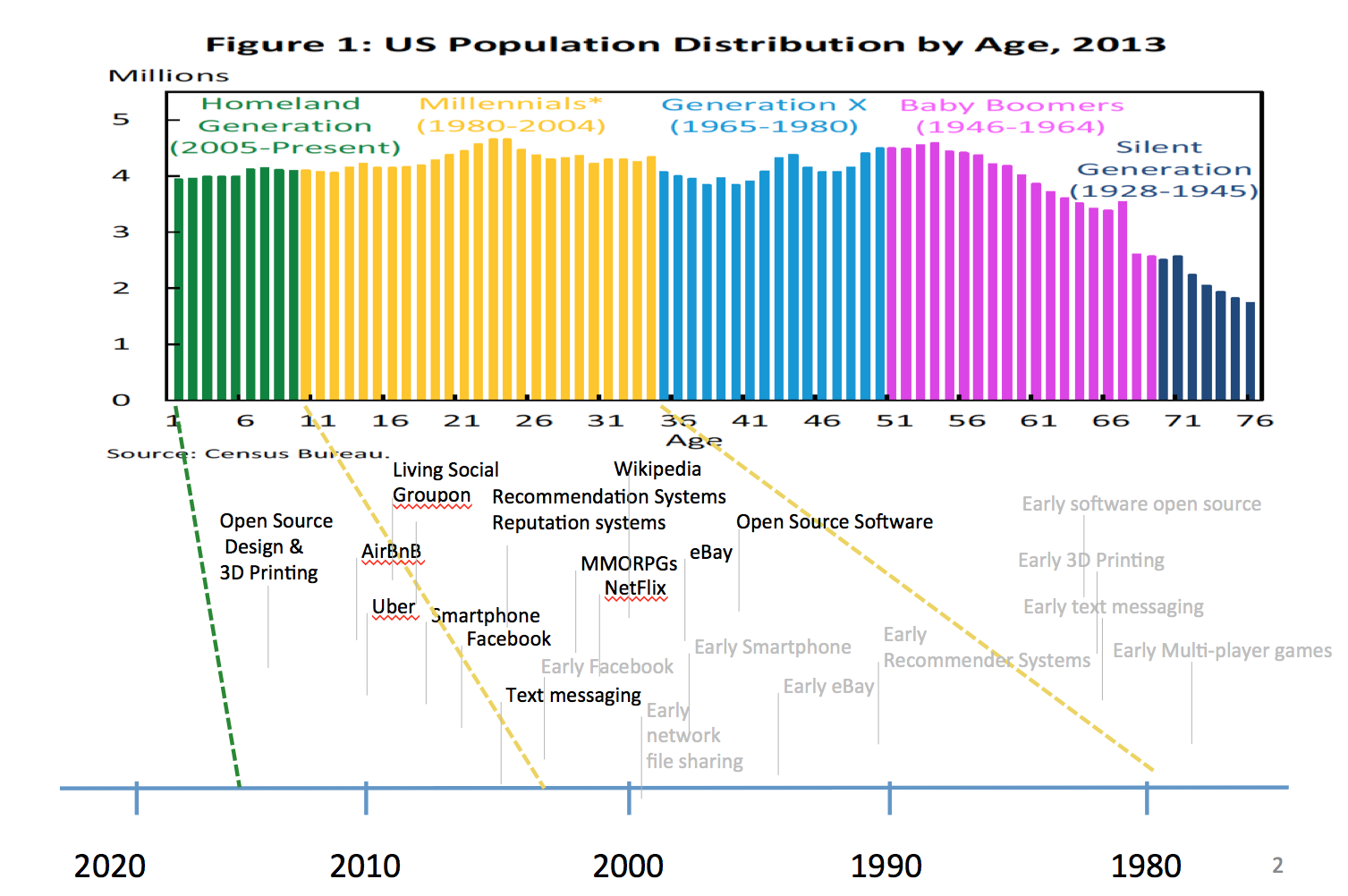Human-computer teams combine best of human and computer cognition. The combination can lead to extremely high performance. But are human-computer teams the future of work?
For some of us, the idea of having computers on the team is outside of normal experience. However, for Millennials, human-computer teaming is the natural next step in a way of life that they have grown up with since they started arriving in 1980. The graphic shows how the technology elements of human-computer teams came into regular use as Millennials grew up.

For example, Wikipedia arrived in the early years of the first Millennials. It is now the most popular encyclopedia by far. The computer role in Wikipedia is mainly about tracking changes, managing editorial workflow and spotting spamming. However, combined with the human cognition that drives editorial decisions, Wikipedia has now ranked among the top five or ten Internet sites for decades.
The Wikipedia example illustrates a major cultural shift in how Millennials communicate. Computers intermediate most of their communications. Other examples include text messaging, which began in the early 2000’s and took off with smartphones in about 2007. Facebook and other social networks take computer-intermediated communications to new levels – greatly outpacing older technologies like email as more enhanced ways of communication intermediated by computers.
Today the “agent” on the other end of the message or chat may be a messenger bot. “Messaging as a platform” is fueling a new round of start-up funding for services where people make requests from computers via texting or chat programs. Apple’s Siri and Amazon’s Echo are two well-known examples where “your wish is my command” in computer-intermediated services.
How do you get advice today? Computer-intermediated recommendation systems started appearing in the early 2000’s to gather and dispense our collective advice for finding good restaurants and services using Yelp, Angie’s List and many others. Systems that recommend books and movies routinely use computers to hone the relevance of recommendations by modeling our own preferences.
Millennials grew up with computer-intermediated coordination. This is central in multi-player and massively multi-player games (MMORPH), which are now a multi-billion dollar industry. But other computer-coordinated activities include eBay (late 1990’s) for coordinating auctions.
Computers that enable the sharing economy emerged in about 2010 with computer-intermediated coordination enabling people to share rides on Uber, book homes or rooms on AirBnB, and so on. Millennials were the founders and early adopters for these computer-intermediated ways of working and living.
In summary, our world is increasingly computer-intermediated, computer-coordinated, and informed by computer cognition. Human-computer teams are next.
What any of us consider “normal” depends on what we grew up with. For Millennials, these directions are not surprising. Their question is not whether the future of work is human-computer teams. It may be more like, “what’s taking it so long?”
My group at PARC is called TAO, which stands for Theory and Technology for Agile Organizations. We design and implement web services that help organizations optimize their activities, using mobile and cloud technology. Thanks to the CitySight team and our partners for all of the discussions and design that informed this project. Thank you to Matt Darst, Hoda Eldardiry, Bob Krivacic, Lawrence Lee, Raj Minhas, Sai Nelaturi, Mudita Singhal, and Barbara Stefik for comments on earlier versions of this post.
